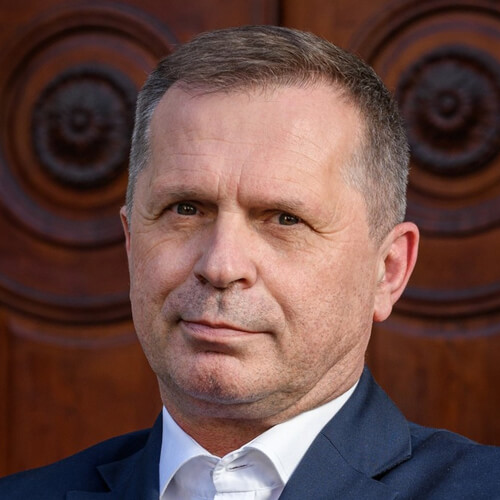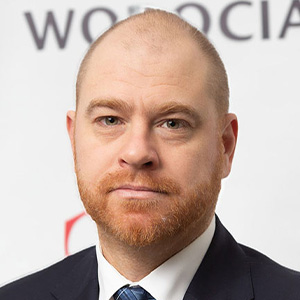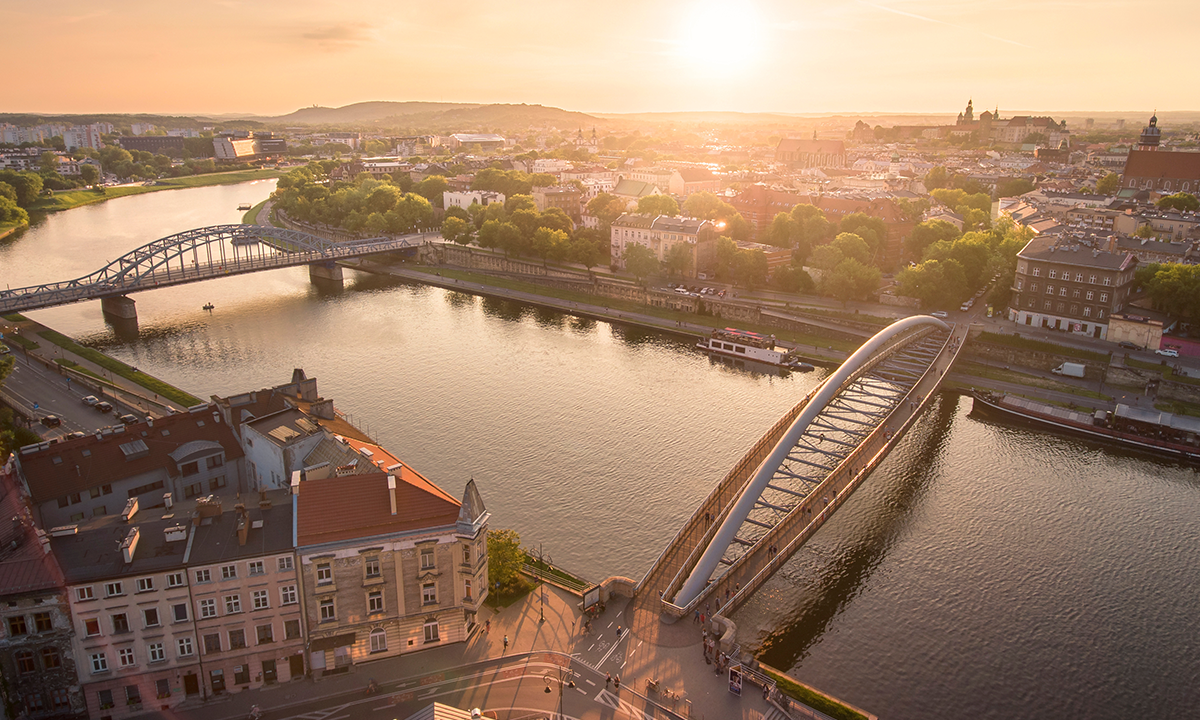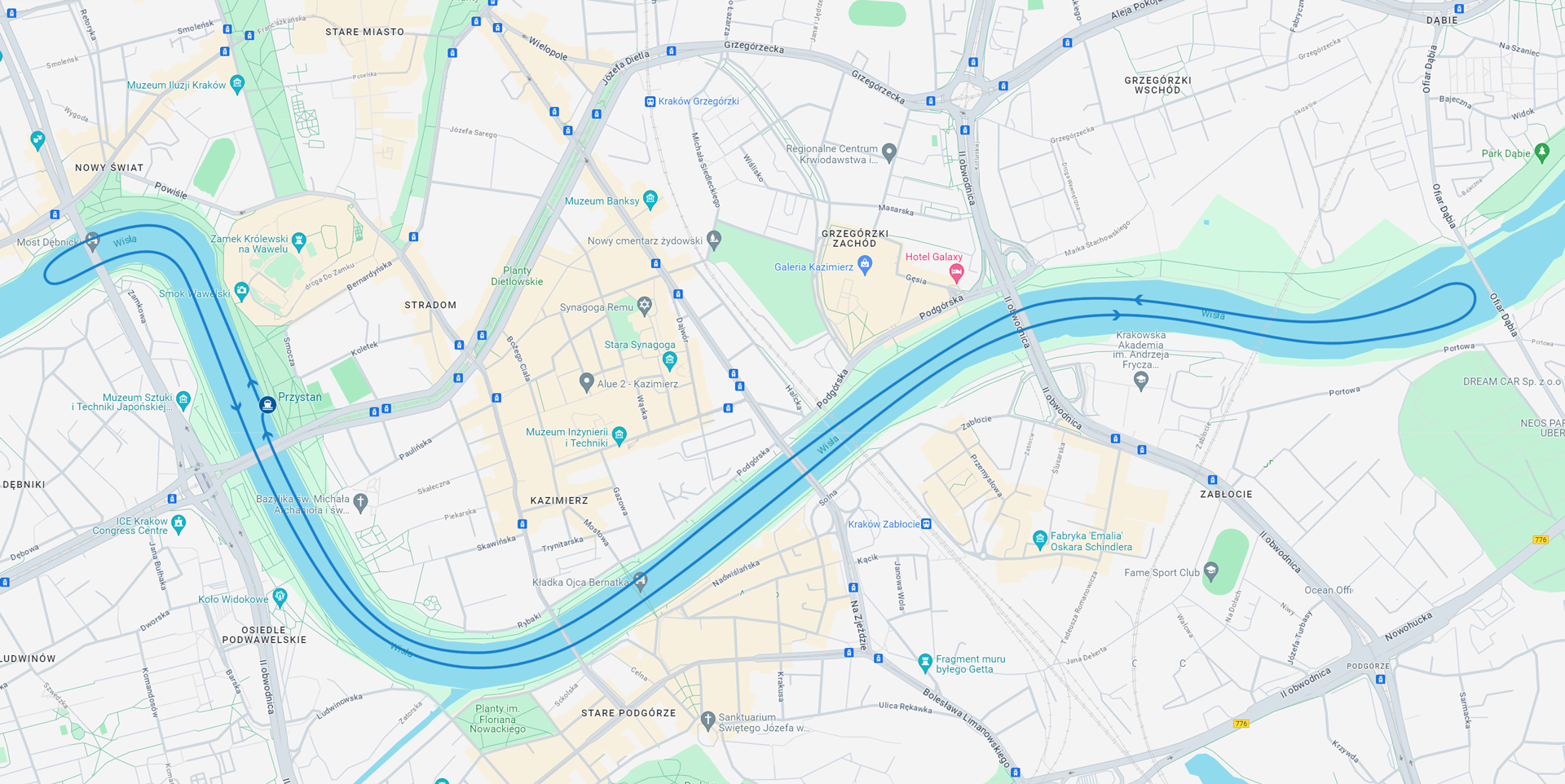Congress Agenda
*The programme will still be expanded and modified.
8:00 – 9:00
Registration of participants
9:00 – 11:35
PLENARY SESSION: Law and investment financing

Paweł Kośmider

Prof. dr hab. Stanisław Mazur

Prof. dr hab. Maciej Zalewski
The following topics will be addressed during the presentation:
- the importance of ecosystems in the catchment as a system for stabilising the hydrological cycle,
- using water-biocenoses interactions to develop innovative near-nature methods and system solutions - Ecohydrology,
- priorities of the United Nations International Hydrological Programme (UNESCO) and the European Commission's 'Water4All' mega-programme,
- new methodology and new methods in catchment management (IWRM) for eliminating the risks of floods and droughts,
- water as a key factor in maximising opportunities for sustainable development - Conclusions of the UN World Conference NY 2023.

Piotr Czarnocki

Michał Oleszko

Dr inż. Klara Ramm
EU environmental legislation makes risk assessment mandatory. The new Wastewater Directive imposes the need for risk assessment in the context of rainwater and wastewater pollution and its impact on human health and the environment. It is therefore necessary to debate the details of the analyses for both rainwater and urban wastewater management.

Paweł Sikorski

Michał Tomusiak

Anna Czyżewska
The National Fund for Environmental Protection and Water Management is financing climate change adaptation tasks from both national and EU funds. In the new financial perspective, NFOSiGW will allocate PLN 7 billion until 2027 under the FEnIKS and FEPW program to support small and large-scale retention. The program will support investments in, among other things, flood risk management, so-called green-blue infrastructure, i.e. mitigation of the effects of "concreting," rainwater reservoirs, prevention of the effects of floods and drought, greening and renaturalization of water reservoirs. Funding will also be available for the construction of monitoring, forecasting and warning systems, or the creation of municipal climate change adaptation plans.

Dr Jędrzej Bujny

Grzegorz Gałabuda
a. The prohibition on including the cost of rainwater discharge in the calculation of tariffs,
b. Implications of the ruling for water and sewerage companies and municipalities,
c. impact on the price of collective sewage disposal.
11:35 – 12:20
PLENARY SESSION: Panel discussion
The future of the tariffing of collective water supply services, in which direction the issue of tariff regulation is heading
- Past practice of PGW Wody Polskie in approving water and wastewater tariffs and its consequences for the health of water and wastewater companies
- ‘Catalogue of discrepancies’ between the regulator and the water and sewerage industry
- Legislative plans to amend the Act on collective water supply and collective sewage disposal to restore the competence of municipal councils to approve water and sewage tariffs
- PGW Wody Polskie's new role in the tarification process
- Anticipated consequences of fundamental changes to the tariffing process for water and wastewater companies and the quality of their performance

Wojciech Kozak

Renata Tomusiak

dr hab. inż. Krzysztof Witkowski
12:20 – 12:40
Coffee break
12:40 – 15:10
TECHNICAL SESSION 1

Ryszard Gajewski
Gdańskie Wody sp. z o.o.
Skuteczne zarządzanie systemem zagospodarowania wód opadowych opartym na retencji zależy od współpracy wszystkich interesariuszy, nie tylko urzędów miast czy przedsiębiorstw wodociągowych. Systemowe wdrażanie retencji opartej na naturze, które angażuje deweloperów, przemysł, instytucje publiczne oraz indywidualnych mieszkańców, stanowi najskuteczniejszy model polityki adaptacyjnej. Oferuje ono długoterminowe i trwałe rozwiązania, które ewoluują wraz ze zmianami klimatu. Podczas prelekcji zatytułowanej „Polityka zagospodarowania wód opadowych na terenach prywatnych w Gdańsku – relacje z inwestorami” opowiem o modelu przyjętym w Gdańsku, barierach napotkanych na początku oraz tych, które pojawiły się po kilku latach wdrażania Gdańskiej Polityki Małej Retencji.

dr hab. inż. Krzysztof Witkowski
"Zielonogórskie Wodociągi i Kanalizacja" Sp. z o.o. from 2019 to 2023 implemented the Project entitled: "Upgrading rainwater management in the area of the Zielona Góra Agglomeration - Stage I", co-financed by the Cohesion Fund, under OPIE 2014-2020.
The total value of the Project was more than PLN 66 million (including VAT), and the amount of EU support was more than PLN 45 million, accounting for 85% of the Project value.
The Project included 14 tasks for works, thanks to the implementation of which the following material effects were achieved:
- constructed storm sewer system with a length of about 6.70 km,
- renovated storm sewers with a length of about 2.52 km,
- constructed retention and infiltration tanks - 5 pieces,
- built-in 8 separators for treating rainwater,
- Powierzchnia objęta systemem zagospodarowania wód opadowych - 3,49 km2.
In August this year. Zielona Góra Waterworks signed an agreement with the National Fund for Environmental Protection and Water Management (NFOŚiGW) to subsidize the Project "Arrangement of rainwater management at Zjednoczenia Street in Zielona Góra" under measure FENX.01.02 Adaptation of urbanized areas to climate change.
The planned total value of the Project is over PLN 3 million, and the planned amount of support from the EU is almost PLN 2 million.
The project includes the construction of a rainwater drainage system with retention and seepage tanks, unsealing of an internal road and adaptation of existing green areas into landscaped green spaces with landscaping elements.
The paper will also address the issue of water supply companies' responsibilities for managing rainwater and snowmelt.

Marcin Łukaszewicz
Wodociągi Miasta Krakowa S.A.
Climate change is also inevitably knocking on the door of single-family homes. Watering backyard lawns and flowerbeds due to the increasingly prolonged high temperatures can start to become costly. It is also not the best solution to ‘waste’ treated water for consumption. So, let's build rainwater tanks - let's reuse rainwater - let's keep the water where it fell. And here comes the first fundamental question - is it worth it?

Stanisław Drzewiecki
After the implementation of the project "Construction and reconstruction of the stormwater drainage system and adaptation of the stormwater drainage network to climate change in the city of Bydgoszcz," which is the first stage of adapting the stormwater drainage system to the radically changing climate and increasing the city's resilience to progressive change, it has become clear that the sponge city concept has worked. It is already benefiting Bydgoszcz residents, so it will be continued through the Phase II project. Hence the creation of the project "Green-Blue Bydgoszcz. Retention and management of rainwater or snowmelt," which is intended to lead to the retention of rainwater in urban areas
and its management for, among other things, irrigation of greenery. This will eliminate problems with maintaining urban vegetation and make the city resilient to climate change. The project "Bydgoszcz green and blue..." has been evaluated by the National Environmental Protection Fund and has received funding under the European Funds for Infrastructure, Climate, Environment 2021 - 2027 (FEnIKS) program."

Łukasz Pawlik
The reconstruction of Krupnicza Street in Kraków, completed in May last year, is an example of innovative green retention solutions that could become a model for other urban projects. The historic street gained a new face thanks to the planting of 39 trees (bird cherry and black alder), the introduction of thousands of shrubs and perennials, and the installation of rainwater tanks. The project includes rain gardens, which not only slow down the run-off of water, but also retain it, reducing the load on the city's sewer system. The woonerf concept, with traffic calmed and shared space for pedestrians and cars, combined with green infrastructure, helped to create a welcoming urban space. The redevelopment also included the installation of urban furniture, car parks and information boards highlighting the historical significance of the street.
Another example of green retention in the completed investments of the Urban Greenery Management Board in Krakow is the Wisława Szymborska Park, opened last year. The park, located in a 19th-century development at the back of the former Francis Joseph barracks, combines historical values with modern solutions of green and blue infrastructure. The park is an oasis of relaxation and contemplation, designed as a sequence of interpenetrating garden interiors, with a unique selection of plants and space tailored to the needs of different social groups. The park includes a retention area for water collected from the roof of the Provincial Library next door, and a system of reservoirs with residing water treated by a hydrophytic treatment plant, which is also one of the park's attractions.
The well-known ‘Gardens of the Cracovians’ project, implemented by the Board of Urban Greenery, aims to create small, friendly green spaces in urban areas. In Krakow, 44 such spaces with a total area of about 12 ha have been realised in recent years. Like the Krakow Gardens project, the plan for creating green retention is to implement numerous small-scale solutions throughout the city, thus achieving economies of scale and significantly improving rainwater management. At the same time, we are looking at the potential for larger projects in which green retention will become the primary rainwater harvesting system, especially during heavy rainfall. This comprehensive approach will allow us to apply for infrastructure funding from European Union programmes such as the Fenix programme, thus supporting the development of green and blue infrastructure in Krakow. The update of the Directions for the Development and Management of Green Areas in Krakow for 2019-2030 includes the mapping of retention potential and the setting of water retention tasks.
Green retention in Krakow, through innovative projects such as those at Krupnicza Street and Szymborska Park, not only improves the quality of life for residents, but also responds to the challenges of climate change. Through a sustainable approach that integrates green infrastructure into the urban landscape, Krakow is becoming an example of modern urban water management.

Maciej Wudarski

Agnieszka Wrzesińska
‘Disposing’ of rainwater during heavy rainfall, without having to put it into the sewer system, is a key issue when we talk about adapting cities to climate change. The second issue is its use during dry periods. Through the use of technical solutions such as blue-green retention roofs or systems that facilitate the growth of tree roots under sealed, traffic-laden pavements, we gain the ability to maintain an adequate level of rainwater balance in a closed loop, as well as supporting greenery, which has a significant impact on people's health and quality of life.

Igor Cyran
In Poland, we can distinguish three main categories of water problems: water scarcity, periodic excess of rainwater and snowmelt, and water pollution. For several years we have been facing the problem of dwindling water resources, the quality of which leaves much to be desired. The condition of surface water is bad, and in some places even alarming. Periodic increases in rainwater due to heavy rains and storms resulting from climate change are not improving our water balance. On the contrary, over-dried soil does not retain water, and rapid runoff exposes cities and municipalities to flooding, soil erosion and increased pollution of surface waters into which pollutants are washed from the land surface.
The Stormwise system is a range of innovative, compatible and scalable solutions designed to increase the resilience of cities and municipalities to the negative effects of extreme weather events, such as torrential rains and droughts. Stormwise products and equipment enable the collection of excess rainwater, its treatment and reuse. Stormwise helps treat rainwater not as a source of problems, but as a resource to be used.
Translated with DeepL.com (free version)

Maciej Pawlak
The challenge of the 21st century is rainwater management. Sudden downpours can lead to localised flooding. Especially in the city, where most of the pavement is sealed and does not allow rainwater to seep naturally into the ground. After months of work, Poznan residents and tourists can walk on the renewed pavement. It is worth paying attention to the installations invisible to the eyes, i.e. those that have been placed under the surface of the pavement. In the course of the paper, it will be possible to find out, among other things, what design challenges the HAURATON team faced in relation to rainwater management and how they were dealt with.

Nadzeya Fialkouskaya
With the increasing effects of climate change, such as extreme weather events, heat waves and more frequent and intense flooding, the role of modern geotechnical solutions is becoming crucial. The presentation provides an overview of innovative designs and technologies used in water retention and flood safety. It discusses the use of modern infrastructure systems, such as rain gardens and flood barriers, which effectively increase rainwater retention. Special attention was given to Pietrucha's retention solutions, including the use of vinyl walls, which offer sustainable and effective methods of groundwater management and flood protection. The presentation discussed projects completed in various parts of Poland, among others, in Biezanow and Zlotyn, and in Szczecin, where a system of thresholds and retention levees was installed. Examples of rain gardens in Gdansk and flood barriers on the Hel Coast in Warsaw are also presented. In addition, retention reservoirs in Poznań and Ełk are described. The presentation underscores the importance of an integrated approach in urban planning, which combines traditional methods with modern technologies to effectively address the effects of climate change.
15:10 – 16:00
Lunch break
16:10 – 18:30
EXCURSION: In the footsteps of Krakow's green-blue infrastructure
As a city rich in history and culture, Krakow also harbours remarkable examples of sustainable water management and engineering. During the 3rd Water Management and Flood Protection Congress, participants will have the opportunity to experience a unique technical tour of Krakow’s green oases. The planned tour, combining modern developments with the city’s history, will provide an unforgettable experience and valuable knowledge.

The first point of our journey will be Axentowicz Square, where participants will have the opportunity to see innovative approaches to counteracting the effects of i.e. urban heat islands. The misting jets and rain garden featured in the square not only aesthetically enhance the space, but also support the microclimate, providing natural cooling on hot days.

We will then proceed to Wisława Szymborska Park, where the involvement of residents in civic budget projects has helped to transform a former parking area into an oasis of green biodiversity. Water features, such as streams and reservoirs, not only add variety to the landscape but also support the local microclimate and rainwater retention.

The next stop will be Krupnicza Street, where the revitalisation of the urban space combined with the use of rain gardens and rainwater tanks reflects an advanced approach to climate change adaptation. It is an ideal place to see how shared spaces can harmoniously combine communicative and ecological functions.

It is impossible to omit the Main Square, the central point of Krakow, where projects from the civic budget supporting urban greenery are implemented with the concern of preserving the historical values of the place (sustainable management of public space can support both culture and ecology).

At the end of our tour, we will visit the Barbakan and the surrounding Planty Park, which not only protects a historic part of the city, but also plays a role in protecting biodiversity and supporting the microclimate in the heart of Krakow.

16:10 – 18:30
EXCURSION: Mobile Flood Protection System of Tauron Arena
19:30 – 23:00
Barbecue dinner
Hotel Forest
9:00 – 11:00
TECHNICAL SESSION 2

Marta Barszczewska

dr inż. Krzysztof Radzicki
The last few years have seen an unprecedented number of extreme floods and disasters of dam structures, including large dams, around the world, including in Europe. This is an issue that is directly linked to climate change and the ageing of numerous hydraulic structures in each country that has them. In this context, ensuring that damming structures are in an adequate state of safety and maintenance is a major organisational and financial challenge even in highly developed countries. This difficult problem also affects Poland. The lecture will present the latest data on the condition of damming structures (dams, dykes, canal embankments) in Poland and compare it with data from around the world. Associated risks and challenges will be discussed, including risks of non-functionality of entire systems and groups of facilities in Poland. Methods implemented worldwide to minimise risks and optimise maintenance costs of damming structures will be shown.

dr inż. Radosław Stodolak
The issue under discussion concerns the hydrological and hydraulic consequences associated with the transformation of the hydrographic network in areas undergoing urbanisation. Changes to the river system in selected cities over the last few centuries were analysed.

Radosław Radoń
RZGW in Krakow carries out a number of investment and maintenance tasks, as well as projects aimed at improving the environment. In all our activities, we strive to adhere to the highest environmental standards. Our investments are carried out under naturalistic supervision. Constant monitoring of the construction process prevents possible damage to the environment. We obtain all environmental approvals well in advance. In carrying out our tasks, we collaborate with various communities, including the environmental community. The cooperation is based on the exchange of experience, co-creation of projects, substantive support. Good examples of such cooperation are the investments already made in the Malinówka dry reservoir or the modernisation of the flood embankments in Krakow. More joint projects lie ahead, such as the renaturalisation of the Dłubnia River or the flood protection of the Prądnik catchment area.

Michał Januszewski

Marcin Czerwiński
Mobile pumps are a key tool in flood relief operations, enabling flooded areas to be drained quickly and efficiently. Thanks to their mobility, they can be quickly transported to areas most at risk of flooding. Tractor shaft-driven solutions - mobile tractor pumps - are able to reach even hard-to-reach areas. The high capacity of these pumps allows large volumes of water to be pumped in a short time, which is extremely important in emergency situations. They can be used in both agricultural and urban areas, adding to their versatility. They are relatively simple to operate, allowing them to be deployed quickly even by less experienced staff. They work reliably for long periods of time, which is crucial during prolonged rescue operations. Thanks to their efficiency and ease of use, mobile tractor pumps are indispensable in emergency management. They are the foundation of effective flood control measures, minimising damage and protecting property and human life.

Michał Sienkiewicz
The use of AUMA electric actuators to control gates, locks, weirs or levees on hydrotechnical facilities. Control along with full signaling and control of hydrotechnical facilities. Electric actuators are an ecological alternative to hydraulic actuators and an improvement to solutions controlled by human power.
11:00 – 11:30
Coffee break
11:30 – 13:30
TECHNICAL SESSION 3

Witold Sumisławski
The talk will focus on the universal challenges of stormwater management faced by small projects as well as large construction projects. Common issues will be presented, such as the punctuated approach and lack of water balances, the risk of flooding and urban flooding versus mpgs, the overloading of GWO infrastructure and the impact of climate change. We will discuss practical methods and strategies that can be applied regardless of the scale of the development to effectively manage rainwater. The presentation will be based on an analysis of real cases and will provide tools and tips that can help everyone involved in construction projects.

Piotr Zymon
The paper will focus on cooperation between municipal entities, companies and private investors to improve the safety of residents. After the catastrophic effects of torrential downpours that have haunted the city over the years, it was decided to conduct hydrodynamic modeling. The task showed that one of the residential developments located in an area at risk of flooding in Krakow is not sufficiently protected, the number of planned two reservoirs will not protect the estate from flooding in case of heavy rains. The catchment area is subject to strong urbanization large urban investments were implemented by various municipal units.
The cooperation of all stakeholders in the catchment area in question in the implementation of a number of solutions, resulted in the leveling of flood risks in the area. As a result, an additional 5 reservoirs were built. KEGW's decision was justified by reliable data and based on a simulation model. Thanks to the quick response and optimization of the settlement's drainage plan by additional reservoirs, the situation of the settlement's residents improved significantly. Despite similar rainfall that occurred in 2021, the settlement was not flooded. The cooperation of residents, the investor and individuals is one of the most important ways to fight for a safe city.
Translated with DeepL.com (free version)

Marcin Glixelli
The topic of the paper focuses on the practical solutions that WMK S.A. is implementing to increase its resilience to the increasing effects of climate change. In particular, the Flood Early Warning System will be presented: An advanced system that can effectively predict the risk of local flooding based on precise weather forecasts will be presented. The system uses advanced IT tools and allows WMK S.A. services to respond quickly.
Simplified ad hoc modeling: The paper will also introduce methods for rapidly creating simulation models, which are essential for decision-making in emergency situations. With these models, the potential effects of extreme weather events can be assessed and appropriate actions can be planned.

Tomasz Zwarzany
In his presentation, the speaker will address the following themes:
- The new reality - climate change, increasing urbanisation, energy transition - how to solve the ‘water’ crisis,
- A little about us - we are AMIBLU,
- Urban areas - new challenges - wastewater solutions, drinking water solutions,
- Rural areas - new challenges - irrigation,
- The new solution: GRP - durable for generations.

Mariusz Iwanejko
The presentation will show methods of trenchless repair of traffic culverts. The advantages of trenchless repairs without digging up streets, roads and other traffic routes will be pointed out. A video of the repair and construction of the largest road culvert of 3x4m using GRP pipe modules will be shown.

Jacek Roman
- Water retention issues in the face of a changing climate
- Water shortage vs. heavy rainfall
- Practical retention solutions of the ZINGRAV system
- Storage of rainwater
- Single and multi-chamber retention systems used
- Regulating flow in retention systems
- ZINGRAV system components

Edyta Zalewska
Presentation of the conclusions of the scientific article ‘Impacts of stormwater pipe materials and pipe repairs on stormwater quality: a review’, Environmental Science and Pollution Research (2023) 30:118065-118077, by researchers at Luleå University of Technology, Sweden. It provides an overview and summary of more than 200 scientific publications on the topic covered.

Dr Paweł Mrowiec
Currently, some 3.6 billion people live in cities around the world. According to UN calculations, there will be a further increase of almost 1.4 billion people living in urban areas by 2030. The intensive development of urban spaces should force changes in planning and management to meet the challenges of civilization. However, is this happening? Urban spaces in the world occupy only about 3% of the Earth's area, while consuming 60-80% of energy and producing about 75% of CO2 emissions. Aggressive urbanization is reducing the area of green-blue resources in cities, leading to threats of flooding from heavy rainfall, as well as drought due to the high degree of pavement sealing. Currently, it would be appropriate to set a new direction for urban space management, which will place greater emphasis on designating new areas for tree planting and water retention in order to develop green-blue infrastructure. The above challenges are global, and action should be taken in all highly urbanized areas around the world, as well as in Poland. The Silesian province is the province with the highest degree of urbanization and population density in the country, and care for green-blue natural resources is often lost to urban solutions that overuse “concrete” in the city space. Is there a chance for change?
The speech is carried out within the framework of the project “Awareness of the importance and development of green-blue infrastructure in cities in the GZM area in the light of own research”, which has been subsidized by the Upper Silesian-Zagłębo Metropolis within the framework of the Program “Metropolitan Fund for the Support of Science” in 2022-2024”.
13:30 – 14:30
Lunch break
14:30 – 16:30
SESSION: Education and communication

Wojciech Kozak
The internet and the huge role of social media in the speed of information in modern communication force the institutions of the public sphere to respond adequately quickly. Such situations primarily concern emergencies. Crises most often occur unexpectedly, so it is extremely important that crisis communication is prepared and planned well in advance Managing water management in the RZGW Krakow area is a difficult and demanding process, and crises affect almost every area of the institution's functioning. These include floods and droughts, the magnitude and scale of pollution of our rivers in the form of illegal outlets, sewage discharge or littering of rivers, the tarification process, inspections of water permits, or compliance with environmental standards. Using crisis communication tools, RZGW in Krakow cooperates with other services at different levels of the institution's management, and the effectiveness of communication activities translates into minimising and reducing crises.

Agnieszka Kowalkiewicz
In the speech "Possibly/rze without plastic - how to talk about rainwater pollution?" we will look at the problem of plastic, which along with rainwater ends up in rivers and seas. Although plastic was supposed to make our lives easier, its ubiquity is becoming a threat not only to marine animals, but also to ourselves. Did you know that about 40 billion cigarettes are burned annually in Poland, of which as much as 65% of cigarette butts do not end up in the trash, but in the environment - on beaches, meadows, sidewalks, streets, paths, in parks or forests? Cigarette butts are one of the most frequently discarded trash in the world and the most frequently collected waste on beaches and waterfronts. The presentation will discuss ways to educate the public to help raise awareness of this problem.

Bogna M. Dominiak
Discussion panel: Education and communication
Threads in the panel:
- Communicating facts in an era of post-truths, conspiracy theories and strong polarization.
- Challenges of communicating important initiatives in times of tabloidization and infotainments
- Memes, feminatives and the language of Generation Z - how to speak to reach and not risk disaster
- Best practices and continuous testing of communication strategies
Leader:
Participants:

Bogna M. Dominiak

Agnieszka Kowalkiewicz

Wojciech Kozak

Paulina Pierzchała
19:30 – 2:00
Gala ceremony, TYTAN 2024 awards

Przegorzaly Castle
10:00 – 12:00
EXCURSION: Cruise on the Vistula River
During the 3rd Water Management and Flood Protection Congress, participants will have the opportunity to take part in a cruise on the Vistula on board the comfortable ship Horyzont. The planned tour, combining modern developments with the city’s history, will provide an unforgettable experience and valuable knowledge.

The route of the one-hour cruise includes a departure from the marina in the direction of the Jubilat department store and the Dębnicki Bridge, built in the years 1887-1888. The ship will then sail towards Wawel Castle and Zakole Wisły (Vistula River bend), where in 1938 intensive works were carried out to rebuild the Vistula riverbed under Wawel Castle forced by numerous floods. The promontory at Dębniki piled up water that repeatedly poured into the city, on top of which it washed up the bank on the Wawel side. The Vistula bend was profiled, the headland shortened, and a while earlier the Rożnowski Villa standing on it was demolished because there would no longer be room for it. There, the ship will turn around and tour participants will be able to see the Vistula Boulevards built between 1907 and 1913, which are historic hydrotechnical structures with a flood control function in Krakow along the Vistula, originally also intended to serve as auxiliary harbour wharves. They mainly consist of retaining walls (an upper, high wall, and a lower wall that captures the riverbed and forms the loading quay). In the line of the upper walls there are brick field stairs for pedestrians and cobbled ramps for vehicular traffic; the railway sidings on the lower level do not survive.

Then the ship will sail successively under the Grunwaldzki Bridge, past the Pauline Monastery in Krakow Na Skałce, the FORUM Hotel, under the Piłsudski Bridge, along the Father Laetus Bernatek foot and cycle bridge, Powstańców Śląskich Bridge, the new railway bridge in Zabłocie (railway line no. 91 Kraków-Medyka), the Kotlarski Bridge and the railway bridge in Dąbie (railway line no. 100 Kraków Mydlniki – Kraków Bieżanów), heading for the Dąbie water level.

From there, it will head to the marina again.



